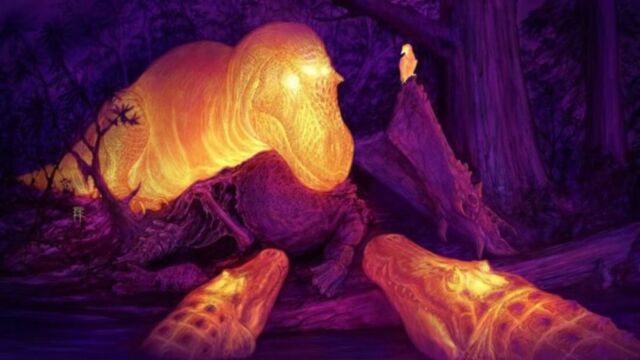We finally know why T. Rex had two holes in the top of its skull

Two holes which can be found in the top of T. Rex's skull. But why? After a study, researchers discovered that they were used as thermal regulators.
Why two holes in the skull?
Researchers have long questioned the presence of two holes located in the top of Tyrannosaurus rex's skull. A first hypothesis indicated that muscles were there to provide more power for the dinosaur's jaws. But this theory was quickly dismissed by Casey Holliday, an anatomist at the University of Missouri, for whom the presence of muscles in this location makes no sense:
Discover our latest podcast
It’s really weird for a muscle to come up from the jaw, make a 90-degree turn, and go along the roof of the skullMore under this adMore under this ad
Instead, the researcher suggested another theory: Tyrannosaurus rex did not have muscles in this part of the body, but rather a network of blood vessels. However, this does not explain how these two holes were used. To answer this question, Casey Holliday and his team went to look for similar cases found in present-day animals.
Alligators in infrared
Some dinosaurs, and present-day animals, belong to the diapsid group, a category of creatures with two openings on the top of the skull, just like Tyrannosaurus rex.
More under this adMore under this adResearchersinvestigated certain diapsids, in this case, alligators, and observed them using infrared cameras. The images revealed a surprising phenomenon, as explained by University of Florida researcher Kent Vliet, co-author of the study:
We noticed when it was cooler and the alligators are trying to warm up, our thermal imaging showed big hot spots in these holes in the roof of their skull, indicating a rise in temperature. Yet, later in the day when it’s warmer, the holes appear dark, like they were turned off to keep coolMore under this adMore under this ad
T. rex, like many other dinosaurs, thus benefited from this thermoregulation system that connects the circulatory system with the outside temperature. This is now the most likely explanation, although researchers say that further investigation will be needed to understand the legendary Jurassic Park dinosaur's metabolism.